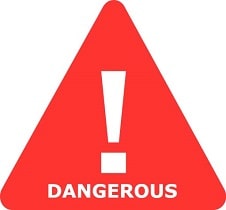Is EINECS 255-446-0 Safe in Breastfeeding
Question
I am a breastfeeding mother and i want to know if it is safe to use EINECS 255-446-0? Is EINECS 255-446-0 safe for nursing mother and child? Does EINECS 255-446-0 extracts into breast milk? Does EINECS 255-446-0 has any long term or short term side effects on infants? Can EINECS 255-446-0 influence milk supply or can EINECS 255-446-0 decrease milk supply in lactating mothers?
EINECS 255-446-0 lactation summary

- DrLact safety Score for EINECS 255-446-0 is 7 out of 8 which is considered Dangerous as per our analyses.
- A safety Score of 7 indicates that usage of EINECS 255-446-0 may cause toxic or severe side effects in breastfed baby.
- Our study of different scientific research indicates that EINECS 255-446-0 may cause moderate to high side effects or may affect milk supply in lactating mother.
- Our suggestion is to use safer alternate options rather than using EINECS 255-446-0 .
- Usage of EINECS 255-446-0 is in contradiction to breastfeeding hence if it is must to use EINECS 255-446-0 and there is no better alternative available then breastfeeding shall be stopped permanently or temporarily.
- Score calculated using the DrLact safety Version 1.2 model, this score ranges from 0 to 8 and measures overall safety of drug in lactation. Scores are primarily calculated using publicly available case studies, research papers, other scientific journals and publically available data.
Answer by Dr. Ru: About EINECS 255-446-0 usage in lactation
Resuming breastfeeding is likely safe when milk platinum levels are not detected (30 days).
Answer by DrLact: About EINECS 255-446-0 usage in lactation
Most sources consider breastfeeding to be contraindicated during maternal antineoplastic drug therapy, especially alkylating agents such as EINECS 255-446-0.[1] It might be possible to breastfeed safely during intermittent therapy with an appropriate period of breastfeeding abstinence, but the duration of abstinence is not clear. In one case, EINECS 255-446-0 was still detectable in milk 13 days after a dose of 2.9 mg/kg. Chemotherapy may adversely affect the normal microbiome and chemical makeup of breastmilk.[2]Women who receive chemotherapy during pregnancy are more likely to have difficulty nursing their infant.[3]
Alternate Drugs
Tamoxifen(Dangerous)
Nilotinib(Unsafe)
Mitoxantrone(Dangerous)
Dactinomycin(Dangerous)
Ipilimumab(Unsafe)
Mercaptopurine(Safe)
Cetuximab(Unsafe)
Carboplatin(Dangerous)
Hydroxyurea(Low Risk)
Paclitaxel(Dangerous)
Etoposide(Dangerous)
Fluorouracil(Dangerous)
Doxorubicin(Dangerous)
Gemcitabine(Dangerous)
Alemtuzumab(Low Risk)
Nivolumab(Unsafe)
Cyclophosphamide(Dangerous)
Rituximab(Low Risk)
Vinblastine(Dangerous)
Cisplatin(Unsafe)
Bevacizumab(Low Risk)
Bleomycin(Dangerous)
Docetaxel(Dangerous)
Pazopanib(Unsafe)
Vinorelbine(Dangerous)
Busulfan(Dangerous)
Trastuzumab(Unsafe)
Dacarbazine(Dangerous)
Imatinib(Unsafe)
Thioguanine(Dangerous)
Cladribine(Dangerous)
Azelaic Acid(Safe)
Erlotinib(Unsafe)
Letrozole(Dangerous)
Exemestane(Dangerous)
Vincristine(Dangerous)
Dasatinib(Unsafe)
